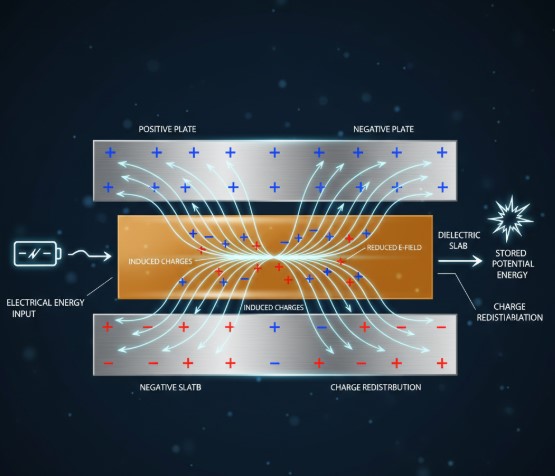The ramp function is an interesting mathematical tool. It is used to model various real-world phenomena. The ramp function increases linearly after a certain point. This function is zero for all negative values and increases linearly for positive values. Understanding the ramp function is essential in many fields. These include signal processing and control systems. Let’s explore the properties and applications of the ramp function.
Table of Contents
More from me
The ramp function, often denoted as ##ramp(x)##, is a fundamental concept in mathematics and signal processing. It smoothly transitions from zero to a linearly increasing value, making it invaluable for modeling various real-world phenomena. This article explores the ramp function, its mathematical definition, properties, and applications, providing a comprehensive understanding of this versatile tool. The study of the ramp function provides insights into continuous functions.
Definition of the Ramp Function
The ramp function is defined as follows: ### ramp(x) = \begin{cases} <p>0, & x < 0 \\</p> <p>x, & x \geq 0</p> <p>\end{cases} ###</p> <p>This means for any negative input, the function returns zero. For non-negative inputs, the function returns the input value itself. The ramp function is continuous for all ##x##, but it is not differentiable at ##x = 0##. Understanding the ramp function is crucial for advanced mathematical applications.</p>
Alternatively, the ramp function can be expressed using other mathematical functions. One common representation involves the Heaviside step function ##H(x)##, which is 0 for ##x < 0## and 1 for ##x \geq 0##. Using this, the ramp function can be written as ##ramp(x) = x \cdot H(x)##. This form highlights the function’s behavior as a product of a linear term and a switch, turning on the linear increase only for positive values of ##x##. This is a useful way to understand the ramp function.
Properties of the Ramp Function
The ramp function possesses several key properties that make it useful in various applications. One important property is its linearity for ##x > 0##. This means that for any constants ##a## and ##b##, ##ramp(ax + by) = a \cdot ramp(x) + b \cdot ramp(y)## when ##ax + by > 0##. This linearity simplifies the analysis of systems involving ramp functions. The ramp function has many properties that are useful.
Another significant property is its relationship to the integral of the Heaviside step function. Since the derivative of the ramp function is the Heaviside step function, the ramp function is the integral of the Heaviside step function. Mathematically, this is expressed as ### \int_{-\infty}^{x} H(t) dt = ramp(x) ###. This relationship is essential in signal processing and control systems, where the ramp function is used to model gradual changes in signals. The ramp function is therefore very important in signal processing.
Applications of the Ramp Function
The ramp function finds applications in numerous fields, including signal processing, control systems, and economics. In signal processing, it is used to model signals that gradually increase over time, such as the charging of a capacitor or the increase in volume of an audio signal. The ramp function helps in analyzing and designing filters and other signal processing components. The ramp function is widely used.
In control systems, the ramp function serves as a test input to evaluate the performance of control algorithms. By observing how a system responds to a ramp input, engineers can assess its stability, settling time, and steady-state error. This is particularly useful in designing controllers for systems that need to track a linearly changing reference signal. The ramp function is essential in control systems.
Ramp Function in Electronics and Control Systems
In electronics, the ramp function is used to model signals that increase linearly with time, such as voltage ramps in circuits. It’s also employed in designing sweep circuits, which generate a linearly varying voltage used in oscilloscopes and other electronic devices. The ramp function helps analyze the behavior of these circuits and optimize their performance. The ramp function is important in electronics.
Control systems utilize the ramp function as a standard test signal to evaluate system performance. By applying a ramp input and observing the system’s response, engineers can determine key characteristics such as settling time, overshoot, and steady-state error. This information is crucial for tuning control parameters and ensuring the system meets desired performance criteria. The ramp function is a key tool in control systems.
Advanced Mathematical Representations of Ramp Function
Beyond its basic definition, the ramp function can be expressed using more advanced mathematical constructs. For instance, it can be represented as the convolution of the Heaviside step function with itself. This representation provides deeper insights into the function’s properties and its relationship to other mathematical entities. Understanding these representations enhances the theoretical understanding of the ramp function.
Furthermore, the ramp function can be generalized to higher dimensions, where it represents a linear increase along a specific direction. These higher-dimensional ramp functions are used in image processing, computer graphics, and other advanced applications. They allow for the modeling of complex phenomena that involve gradual changes in multiple dimensions. The ramp function is very versatile.
Similar Problems and Quick Solutions
Problem 1: Find ##ramp(-5)##
Solution: Since -5 < 0, ##ramp(-5) = 0##.
Problem 2: Find ##ramp(10)##
Solution: Since 10 > 0, ##ramp(10) = 10##.
Problem 3: Find ##ramp(0)##
Solution: Since 0 >= 0, ##ramp(0) = 0##.
Problem 4: Find ##ramp(x)## for ##x = -2##
Solution: Since -2 < 0, ##ramp(-2) = 0##.
Problem 5: Find ##ramp(x)## for ##x = 7##
Solution: Since 7 > 0, ##ramp(7) = 7##.
| Property | Description |
|---|---|
| Definition | ##ramp(x) = x## for ##x >= 0##, ##ramp(x) = 0## for ##x < 0## |
| Continuity | Continuous everywhere |
| Differentiability | Not differentiable at ##x = 0## |
| Applications | Signal processing, control systems, electronics |
We also Published
RESOURCES
- Ramp function – Wikipedia
- Smooth approximation of ramp function – Mathematics Stack Exchange
- Linear ramp function | PLCtalk – Interactive Q & A
- RAMP Function Block does not work when I use Time parameter
- How in the hell does the Ramp Function in Studio 5k work : r/PLC
- LMX2492-Q1: Help with Ramp Function Start – Clock & timing forum …
- Ramp Function — from Wolfram MathWorld
- s7-300 Ramp Function – Siemens SiePortal
- Ramp Function
- Workout builder ramp function in Garmin – Intervals.icu Forum








0 Comments